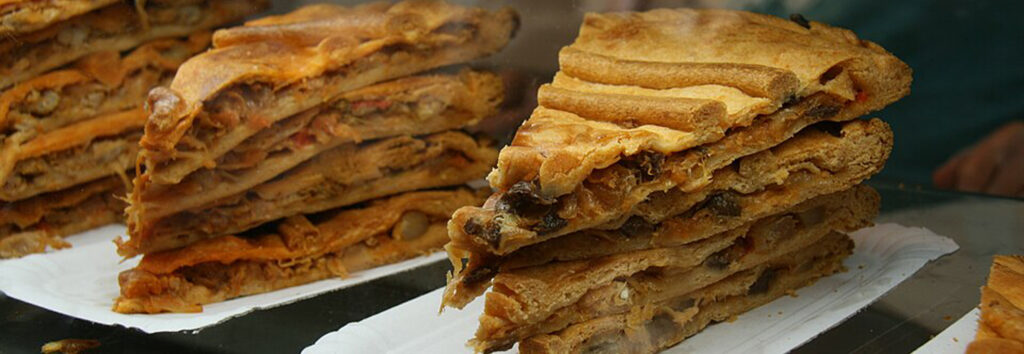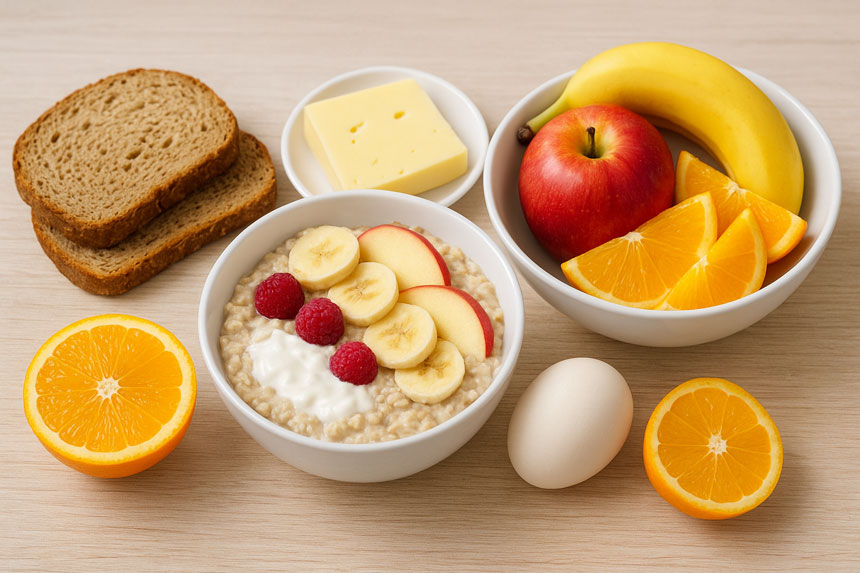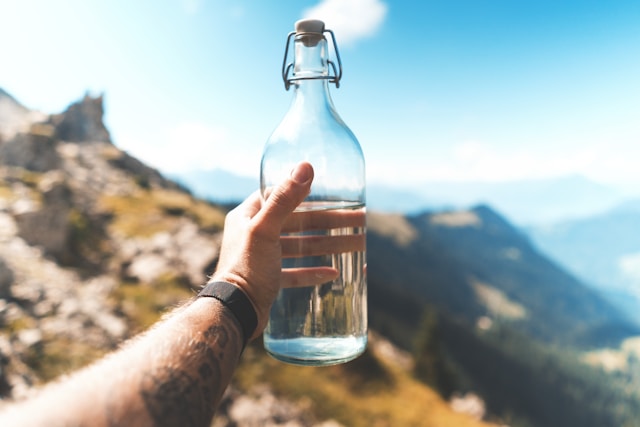Article translated by an automatic translation system. Press here for further information.
Eat on the Camino de Santiago. Gastronomy and tradition
17/09/2025

The mere fact of eating on the Camino de Santiago is an experience in itself. To enjoy the cuisine of the different regions that go through each stretch until you reach Compostela, is something that no pilgrim can miss.
Each route has its own gastronomic offer, and the diversity of local and seasonal products, enhance the culinary experience throughout the tour.
On the other hand, eating well, in a healthy and balanced way, is essential to realize the pilgrimage with impetus and positive attitude. Remember that your body will be in constant motion, facing long walks, climate changes and varied terrain. That is why proper food is essential to maintain energy and enjoy the journey.
Let’s see what aspects related to healthy eating and gastronomy you can’t ignore for your Camino to come out and ask.
Suggestions for eating on the Camino de Santiago taking care of health
To successfully cope with every day of pilgrimage, without performance lowering and failing forces, you need to be conscientious with diet and hydration. This implies the correct choice of the type of food we will take and plan meals very well.
It is advisable to do, 5 meals a day.The top three, breakfast, lunch and dinner, and two more, in the form of a snack, to maintain a constant energy level, to avoid peaks in glucose levels, to facilitate muscle recovery and not to reach hungry for food or dinner.
An energetic breakfast before you get started

Photo by Consumer
Starting each day with a full and varied breakfast is essential. It will help you start the march energetically and maintain it during the first hours of walking, as well as help to improve concentration and your mood.
You'll probably eat dinner soon and lie down early, so you'll wake up quite hungry.Ideally, breakfast should contain protein, vitamins, dairy and carbohydrates. You can get them by eating whole bread, cheese, eggs, oats with natural yogurt or milk, and fresh fruits, such as apples, bananas or oranges.
Tip: If the hostel does not offer breakfast, bring instant oatmeal and fruit envelopes with you
Mid-morning: light snacks and snacks
The stages are completed after hours walking and, as the day progresses, fatigue and fatigue begin to be noticed.
To maintain and restore energy levels, light snacks are the best alternative. That's why you can't miss out on your backpack on nuts, some piece of fruit (or dried fruit), chocolate, energy bars or cereals.
All of them are very easy options to find in stores or supermarkets along the Camino, and they will allow you to recover quickly.
Council: Avoid sugary snacks that give fast but transient energy.
Main meal (after walking)
After a day of walking it is essential to replenish energies with a main balanced meal. The ideal is to combine a base of carbohydrates such as rice, pasta or legumes, which help to recover the muscle glycogen, with a source of protein such as chicken, tuna, egg or cheese, essential for the repair of tissues. Accompanying the dish with cooked vegetables or a salad provides fiber, vitamins and minerals that promote digestion and general well-being. This combination not only nourishes, but also prepares the body for the next day of effort.
Council: They look for pilgrim menus, they are usually cheap and complete.
Snack
Snack is a key moment to replenish forces and prepare the body for dinner without overloading it. A balanced option may include yogurt, a piece of fruit, or a little integral bread accompanied by a source of protein such as ham or cheese. Supplementing with tea or infusion favors hydration and relaxation, especially useful if the day has been demanding. This light and nutritious combination helps maintain energy without interfering with night rest.
Dinner
Dinner should be light but nutritious, to favor rest and muscle recovery without overloading the digestive system. Options such as a tortilla, a hot soup or rice with vegetables provide enough energy and essential nutrients without being weighed. It is advisable to avoid heavy or high-fat dinners, as they can make it difficult to sleep and affect the performance of the next day. A balanced dinner helps to close the day with well-being and prepares the body to continue the road.
Continuous hydration

Photo by Marvin Meyer
Every pilgrim should drink water regularly, especially if it is hot and during the central hours of the day, to avoid dehydration. Walking for hours involves constant loss of fluids and electrolytes, so it is important not to wait to be thirsty for drinking. It is advisable to drink short drinks, but every little time (20 – 30 minutes).
Another recommendation to consider, if the day is very hot and heavy, or the effort is intense and in the most demanding stages of the Camino, is to drink isotonic drinks or carry electrolyte pills that can be diluted in the water to replenish and balance fluids.
Practical advice: Always carry a bottle of water with you (there are multiple sources along the Camino in being able to fill it up) and avoid alcohol and excess coffee, as they dehydrate.
Gastronomy as an important part of the experience
The culinary richness that awaits at each stop throughout the Camino is an incentive that provides incalculable value to the lovers of the good table.
All routes offer the opportunity to connect with the flavors of the land and the local cuisine of each region. Here are some examples of the most emblematic.
- Camino Francés: the gastronomic offer on this route is as varied as the landscapes that are enjoyed in it. Broths, soups and cooked, cheeses of sheep and cows, game (rabbit meat, hare and partridge), fish such as trout, cooked in various ways, and sweets and chocolates.
- Camino Portuguese: this route combines Galician and Portuguese flavors. Portuguese local specialities such as cod, roasted sardines and sweets such as Francesinha de Porto and Belém or cream pastes are mixed with shellfish, octopus, Padron peppers and Galician empanada.
- Camino del Norte: the gastronomy of this route has a clear influence of the sea, combined with products of land. Fresh fish and shellfish, excellent vegetables, cheeses, traditional and fabes with clams, mountain cooked, passiegos desserts and the mythical cake of Santiago.
Tips for eating well and cheap on the Camino
While it’s possible to eat properly throughout the trip without spending too much, point out these tips so your budget doesn’t get much out of control:
- Buy in local supermarkets: One of the most effective ways to eat well without spending a lot is to take advantage of local supermarkets found in towns and cities along the way. There you can find basic, nutritious and economical products such as integral bread, seasonal fruit, natural yoghurt and preserves such as tuna or sardines, which provide quality proteins and are easily preserved. Planning small purchases every two or three days helps to avoid unnecessary weight and maintain a varied diet without the budget skyrocketing.
- Cooking in hostels: Many hostels already have kitchens available to pilgrims who want to make their own food, an excellent opportunity to save money and maintain a healthy and personalized diet. In addition, sharing the kitchen with other pilgrims encourages the exchange of recipes, advice and moments of coexistence. To take advantage of this option, it is useful to bring some basic utensils (such as a spoon, small knife or tper), and plan meals that are easy to prepare, which do not require refrigeration for a long time.
- The pilgrim’s menu is a very popular and economical option – between 10 and 12 euros – which is usually offered in bars and restaurants close to the main routes. These menus are usually designed to meet the nutritional needs of the walker, with dishes rich in carbohydrates, proteins and vegetables. Besides being an economic alternative, it allows you to enjoy local cuisine without worrying about cooking or searching for ingredients. It is advisable to ask about the pilgrim's menu when arriving at each location, as it is not always announced, but many establishments offer it if requested. To access it you will need to present the pilgrim credential.
- Bring prepared food for the day. There are pilgrims who choose to eat picnic with varied breads, sausages, cheeses, fruits and nuts. Fresh and nutritious food that can be bought in local shops and supermarkets at an affordable price.
Extra tips for the walker
- Don't experiment with new foods along the Camino.
- Listen to your body: If you feel fatigue, increase your carbohydrate intake.
- Post-walking protein: helps repair muscles and prevent injuries.
- Magnesium and potassium: essential to avoid cramps. Bananas, nuts and water with electrolytes are good sources.
El Camino is a unique opportunity to explore the gastronomic diversity offered by both Galicia and the other territories through which the routes pass. Don't waste it! And that's good.